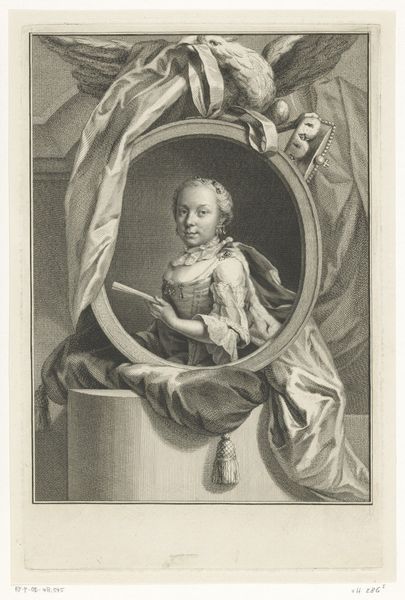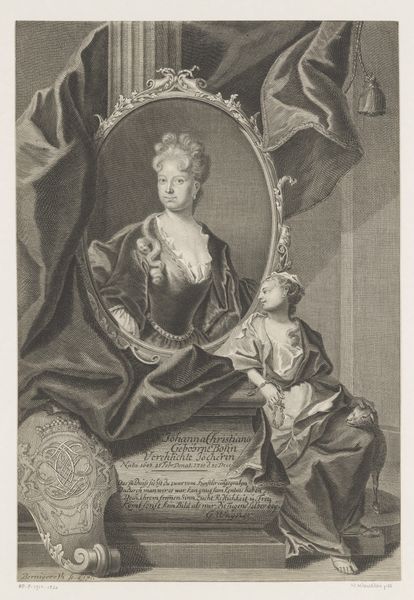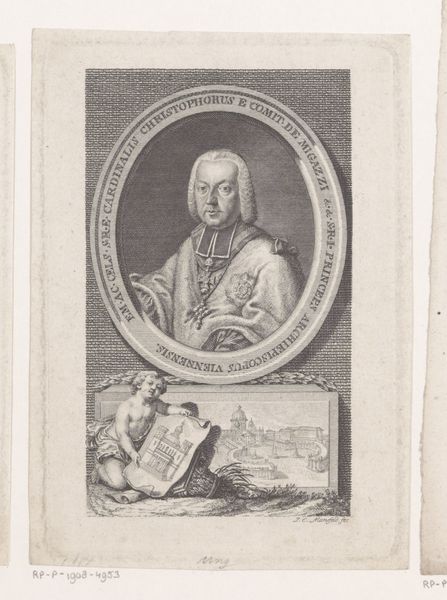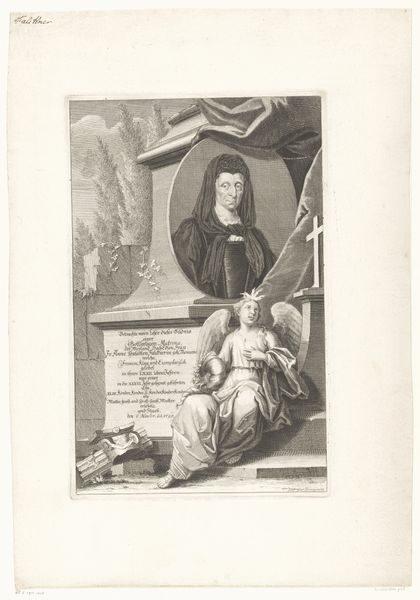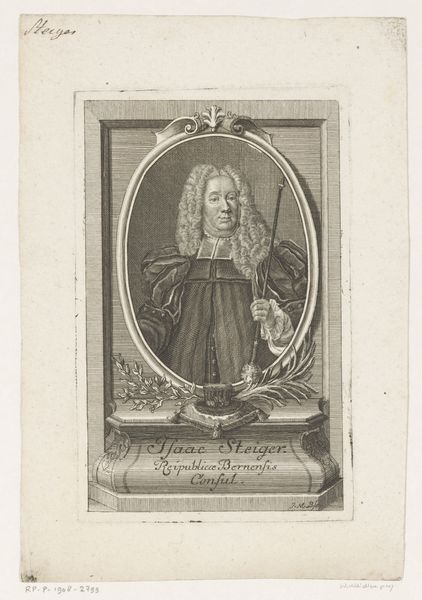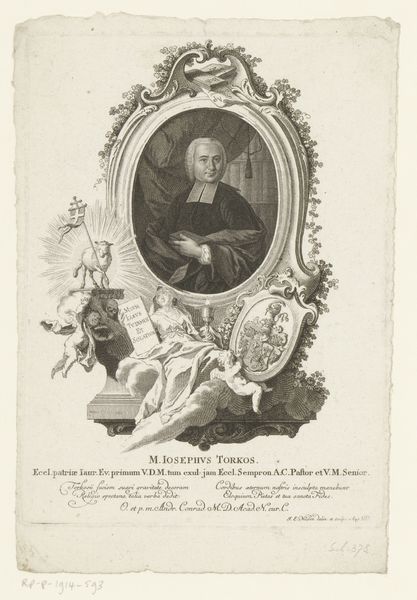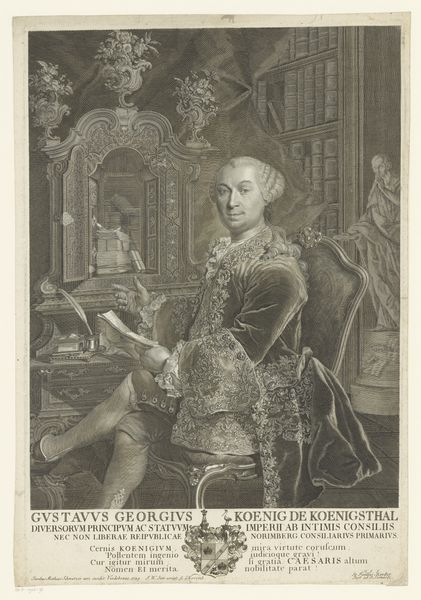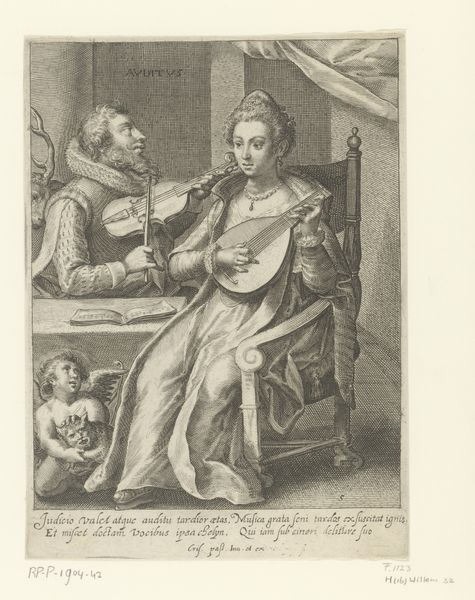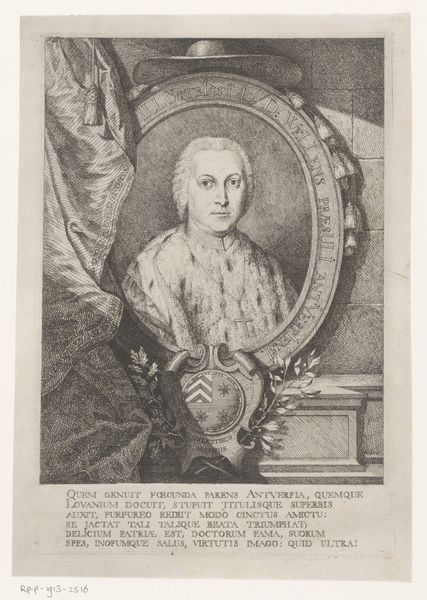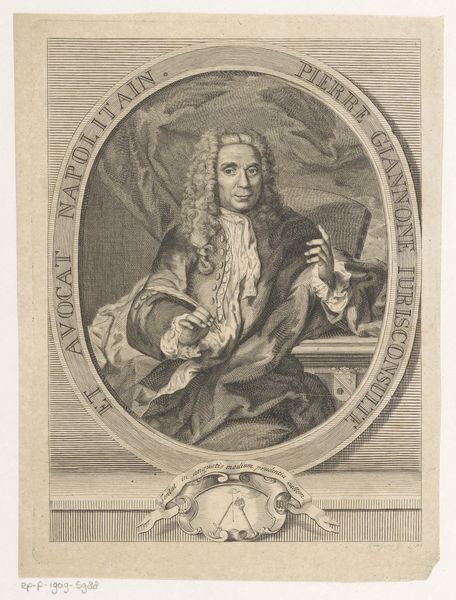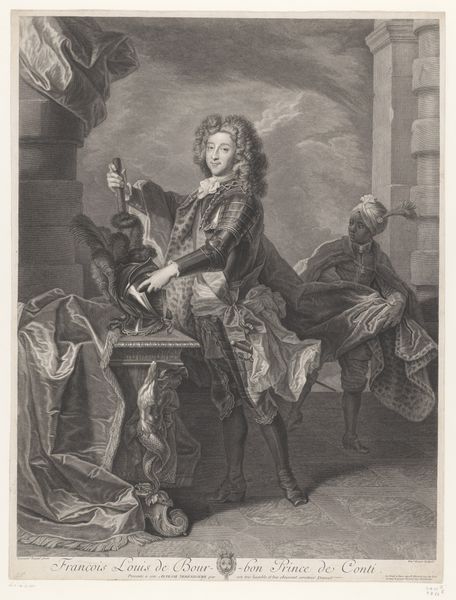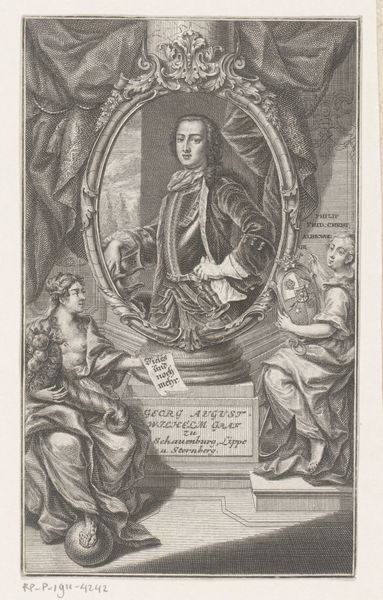
engraving
#
portrait
#
baroque
#
old engraving style
#
portrait reference
#
momento-mori
#
history-painting
#
engraving
Dimensions: height 294 mm, width 192 mm
Copyright: Rijks Museum: Open Domain
Editor: This is "Portret van Regina Christ," an engraving created between 1714 and 1733 by Martin Bernigeroth, currently housed in the Rijksmuseum. It feels intensely symbolic, with a prominent skull and a formal portrait set within what seems like a mourning scene. What socio-political stories do you see embedded in this portrait? Curator: The *memento mori* aspect is key. Images like this served as public reminders of mortality, which played a crucial role in shaping social values and religious piety during the Baroque period. Consider who commissioned it and where it was displayed. The theatrical presentation—the draped curtain, the allegorical figure—signals a public display of grief, likely meant to reinforce social norms around death and remembrance within the community. Editor: So, it's not just a personal expression, but a calculated public performance? Curator: Exactly. The portrait served a dual purpose: commemorating an individual, Regina Christ, while also instructing viewers on proper behavior in the face of death. What does the inscription tell us? Birth and death dates were part of it, yes? Editor: It states "Regina Christin, gebohrne Kochin" with her birth and death dates. This emphasizes her identity and lineage. Curator: Precisely! It reaffirms social standing while simultaneously placing her within a universal narrative of mortality. These images help us understand how early modern societies negotiated the public and private aspects of death and how those notions shape culture. Editor: So, even a seemingly simple portrait can be a window into the complex cultural and social dynamics of its time. It’s fascinating how an image designed to evoke personal memory became a tool to teach and regulate society. Curator: Indeed. Reflecting on this portrait reminds us that art is often embedded within societal expectations, even at times of mourning.
Comments
No comments
Be the first to comment and join the conversation on the ultimate creative platform.
